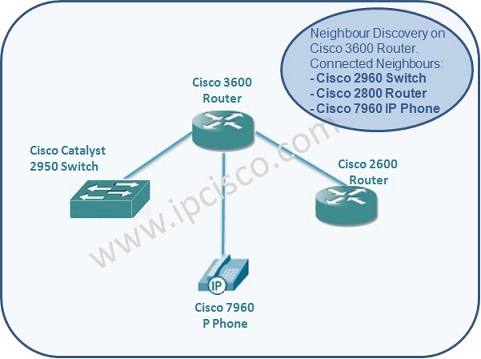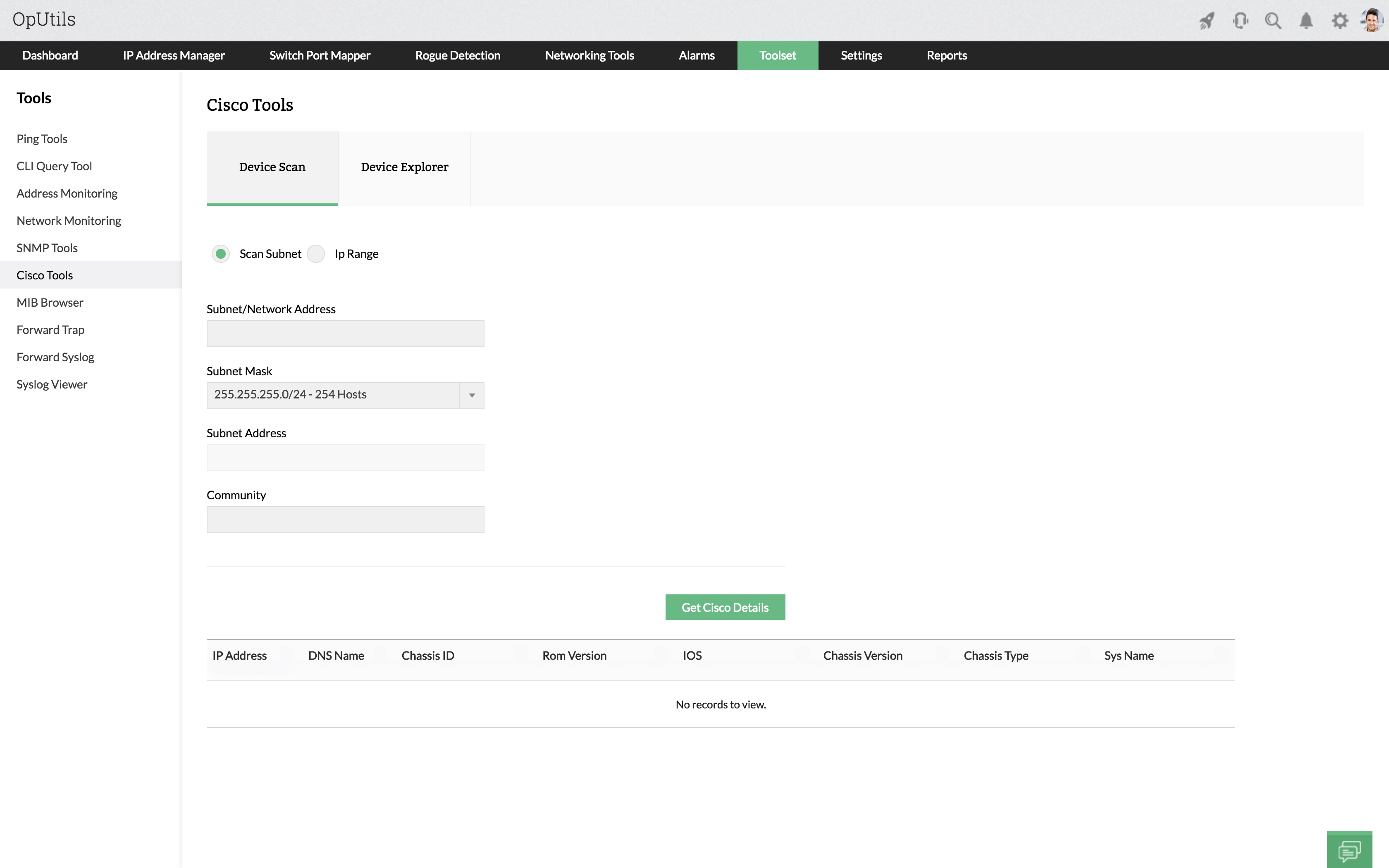

- #Cisco device discovery tool serial numbers
- #Cisco device discovery tool update
Therefore, it is configured from the DataSource definition. Note: In addition to gathering instance properties via Active Discovery, you can also manually assign properties to instances, as discussed in Resource and Instance Properties.Īctive Discovery is configured on a per-DataSource basis. Note: Instance property collection is available only with Active Discovery processes that use script, SNMP, or WMI query methods.
Metadata for each VM hosted by a Hypervisor (CPU count, memory allocation, virtual NIC count, guest OS, etc.). Serial numbers for each FRU discovered in a switch chassis, or drives in a storage system. The following properties are commonly collected as instance properties: Once collected, instance properties are stored (and displayed in the UI), and can be used as keys to group instances together, or as part of complex datapoint calculations. These are analogous to resource properties, but are collected on a per-instance basis. Optional sets of key-value pairs that provide static data about the instance. An optional description of the instance, which is displayed along with the instance name in the Resources tree. the variable part of an SNMP OID tree, or the volume ID in a storage system). The unique ID of the instance, used as the variable to identify this instance when querying the device for data (e.g. This value must be unique for the device/DataSource combination. Fastethernet0), also known as the “ALIAS” as displayed in the Resources tree. The descriptive name of the instance (e.g. Information Gathered by Active DiscoveryĪctive Discovery retrieves the following information for each instance it finds: This means that instances will not be discovered, updated, or deleted for those impacted resources. Note: When you disable DataSource monitoring for a particular resource or group of resources (as discussed in Disabling Monitoring for a DataSource or Instance), Active Discovery is also disabled for that DataSource. For more information on manually executing Active Discovery, see Adding Instances. The ability to manually execute Active Discovery is useful when you have added a new object onto a device and want to be sure LogicMonitor picks it up immediately for monitoring without having to wait for the scheduled Active Discovery execution. It is manually initiated from the Resources page. A device or DataSource’s properties/configurations are changed. A device (or DataSource) is added into monitoring. In addition to executing according to the schedule defined in the DataSource definition, Auto Discovery additionally runs when: volumes on a NetApp disk array), however, are assigned discovery schedule of several times per hour. Objects that are likely to change more frequently (e.g. the number of fans or CPUs in a system) are assigned discovery schedules of once a day by LogicMonitor. 
For example, objects that typically change less frequently (e.g. This discovery schedule is configured from the DataSource definition (as discussed in the Configuring Active Discovery section of this support article) and varies per DataSource. Active Discovery ExecutionĭataSources with Active Discovery enabled have a discovery schedule that defines the time between Active Discovery executions.
Without Active Discovery, you would have to remember to manually update your monitoring instances every time you make a change to your production environment.

For example, Active Discovery ensures that each new VM created on your virtualization stack is discovered and monitored, or that each new volume added to your storage system is discovered and monitored. Instances are organized under their parent DataSources in the Resources tree.Īctive Discovery is extremely valuable for ensuring that monitoring remains up to date with changes in your environment. The output of an Active Discovery process is one or more instances for which LogicMonitor can collect a particular type of data. Active Discovery is the process by which LogicMonitor determines all of the similar components of a particular type on a given system.







 0 kommentar(er)
0 kommentar(er)
